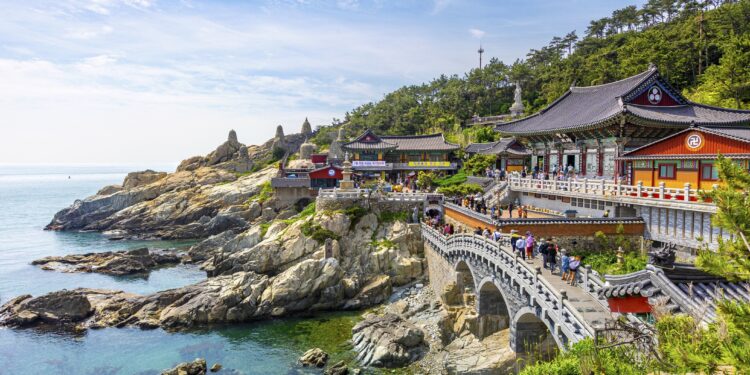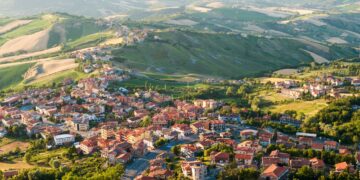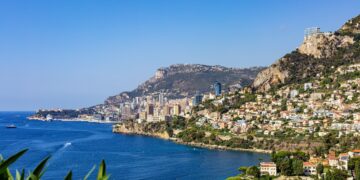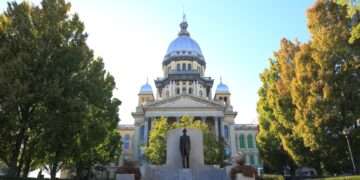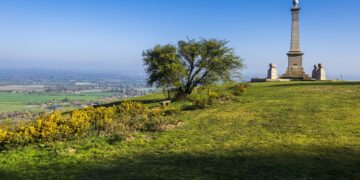South Korea’s distinctive blend of ancient traditions and cutting-edge modernity has made it a compelling setting for filmmakers around the globe. The country’s fascinating history, rich culture, and diverse landscapes provide a versatile canvas for a broad spectrum of stories, from heart-wrenching dramas to action-packed thrillers. Let’s dive into the captivating world of South Korean cinema by exploring 10 famous films shot in South Korea.
10 Famous Films Shot in South Korea
South Korea’s cinematic allure is undeniable. Its bustling cities, serene rural landscapes, and historic landmarks have featured prominently in numerous critically acclaimed films. Here are ten notable films that brought the unique charm of South Korea to the silver screen:
- Oldboy (2003): This renowned thriller, part of director Park Chan-wook’s “Vengeance Trilogy,” showcases the gritty, urban atmosphere of Seoul.
- The Host (2006): Bong Joon-ho’s monster film uses locations around Seoul’s Han River, creating a blend of horror, comedy, and social commentary.
- Parasite (2019): This Academy Award-winning film by Bong Joon-ho reveals the stark contrast between affluent and impoverished neighborhoods in South Korea.
- Train to Busan (2016): This thrilling zombie movie was filmed in various locations, including the high-speed KTX train and the port city of Busan.
- The Handmaiden (2016): Park Chan-wook’s erotic psychological thriller features beautiful shots of South Korea’s rural landscapes and Japanese colonial-era architecture.
- Snowpiercer (2013): Bong Joon-ho’s post-apocalyptic thriller was filmed at Barrandov Studios, with outdoor scenes shot around Incheon and the Tyrolean Alps.
- Burning (2018): This mystery drama, based on a short story by Haruki Murakami, uses Paju and Seoul as backdrops to its intriguing narrative.
- A Taxi Driver (2017): This historical drama, based on a true story, was filmed at various locations, including Gwangju, to depict the city’s 1980 uprising accurately.
- My Sassy Girl (2001): This romantic comedy, one of the highest-grossing Korean comedies of all time, features numerous locations around Seoul.
- The Day He Arrives (2011): This black-and-white drama by Hong Sang-soo uses the wintry streets of Seoul’s Bukchon district to create a poignant, contemplative atmosphere.
Each of these films captures a different facet of South Korea’s multifaceted character, allowing audiences to experience the country’s unique allure through diverse cinematic narratives.
5 TV Shows Set in South Korea
The small screen is no stranger to South Korea’s charm. The country’s rich culture, picturesque landscapes, and dynamic urban scenes have been the backdrop for many popular TV shows. Here’s a glimpse into 5 TV shows set in South Korea:
- Crash Landing on You (2019-2020): This popular romantic drama showcases a variety of locations, including Seoul and the DMZ, and even a fictional North Korean village.
- Reply 1988 (2015-2016): This nostalgic series perfectly captures the ambiance of a typical 1980s neighborhood in Seoul.
- Goblin (2016-2017): The fantasy drama features many scenic locations around South Korea, including the picturesque Jumunjin Breakwater in Gangneung.
- Itaewon Class (2020): The title itself refers to a vibrant neighborhood in Seoul, which is prominently featured in this drama about ambition, justice, and entrepreneurship.
- Kingdom (2019-present): This zombie thriller series uses various historical sites and palaces across South Korea to portray the Joseon period.
These TV shows not only entertain but also offer a window into South Korea’s diverse landscapes, fascinating culture, and modern lifestyle.
5 Animated Films Set in South Korea
South Korea’s animated films often reflect the country’s culture, society, and history. Let’s take a look at 5 animated films set in South Korea:
- Leafie, A Hen into the Wild (2011): This touching film showcases rural landscapes as Leafie embarks on her journey of freedom and motherhood.
- Seoul Station (2016): As the prequel to ‘Train to Busan,’ this animated zombie film starts the outbreak in the heart of Seoul.
- Pororo the Little Penguin (2003-present): This popular children’s series might be set in a fictional snowy land, but the beloved penguin Pororo is a creation of South Korea.
- The King of Pigs (2011): This brutal and realistic film uses animation to explore societal issues, with the backdrop of a gritty urban environment.
- Dibo the Gift Dragon (2006-2009): Another children’s favorite, the cozy land of Cozy Land, has been a gift from South Korean animators to kids worldwide.
Though animation might offer a more stylized view of the country, these films still capture the essence of South Korea in their unique way.
Famous Books Set in South Korea: 3 Classic and 3 Contemporary
Literature offers another avenue to explore South Korea. Many books, both classic and contemporary, have brought the country’s history, society, and culture to life. Here are 3 classic and 3 contemporary famous books set in South Korea:
Classic:
- The Vegetarian by Han Kang: This Man Booker International Prize winner explores the protagonist’s decision to become a vegetarian and its consequences in South Korean society.
- Please Look After Mom by Shin Kyung-sook: This poignant novel offers a glimpse into the lives of a family in search of their missing mother in bustling Seoul.
- Pachinko by Min Jin Lee: An epic historical novel that follows several generations of a Korean family living in Japan.
Contemporary:
- If I Had Your Face by Frances Cha: This book delves into the lives of four young women navigating the intense societal pressures and standards of beauty in contemporary Seoul.
- Kim Jiyoung, Born 1982 by Cho Nam-Joo: This novel became a cultural phenomenon for its depiction of the everyday sexism experienced by an average Korean woman.
- Human Acts by Han Kang: This book provides a harrowing account of the Gwangju Uprising in 1980.
Each of these books offers an immersive experience of South Korea, from its bustling cities to its societal norms, through compelling narratives and character studies.
Exploring South Korea Filming Locations: Where to Go
Now that we’ve explored South Korea through film, television, and literature, it’s time to step into these scenes in real life. Here are some must-visit filming locations for your exploring South Korea itinerary:
- Nami Island: Featured in the hit drama ‘Winter Sonata,’ this half-moon-shaped island is a tourist favorite for its tree-lined avenues and serene ambiance.
- Gyeongbokgung Palace: As one of the most iconic landmarks in Seoul, this historic palace has been featured in numerous period dramas, including ‘Kingdom.’
- Petite France: A charming French-themed village that has become a popular filming location for shows like ‘My Love from the Star’ and ‘Secret Garden.’
- Jumunjin Breakwater: Visit the spot where the ‘Goblin’ protagonist Kim Shin first meets Ji Eun-tak, complete with the iconic lighthouse.
- Hapcheon Image Theme Park: This outdoor film set has been used for numerous period dramas due to its accurate representations of different eras, from Japanese colonial times to the 1970s.
Where to Sleep in South Korea: 3 Cheap and 3 Luxury Options
After a day of exploring, you’ll need a comfortable place to rest. Whether you prefer a budget-friendly guesthouse or a luxury hotel, South Korea offers a wide range of accommodations. Here are 3 cheap and 3 luxury options for where to sleep in South Korea:
Budget:
- Kimchee Guesthouse, Seoul: This backpacker favorite offers a comfortable stay in several locations across Seoul.
- Sum Guesthouse, Busan: Located near Busan Station, this guesthouse is a budget-friendly option with a communal atmosphere.
- Dalkom Guesthouse, Jeonju: A charming guesthouse that offers a traditional Korean sleeping experience in the heart of Jeonju Hanok Village.
Luxury:
- The Shilla Seoul: This luxury hotel combines traditional Korean aesthetics with modern comfort and has hosted numerous celebrities.
- Lotte Hotel Jeju: Located on Jeju Island, this resort offers a luxurious stay with its beautiful sea views, outdoor pool, and casino.
- Paradise City, Incheon: A resort complex that features a hotel, casino, and shopping, offering a luxurious and entertaining stay near Incheon International Airport.
Where to Eat in South Korea: 3 Budget and 3 Luxury Options
South Korea offers a culinary journey that’s as diverse as its film locations. From street food to fine dining, here are 3 budget and 3 luxury options for where to eat in South Korea:
Budget:
- Myeongdong Kyoja, Seoul: Known for its delicious dumplings and noodle soup, this restaurant has become a staple in the Myeongdong district.
- Gwangjang Market, Seoul: Try a variety of street food, like bindaetteok (mung bean pancake) and mayak gimbap (addictive seaweed rice rolls).
- Jagalchi Fish Market, Busan: Visit Korea’s largest seafood market, where you can enjoy fresh seafood at one of its many food stalls.
Luxury:
- Jungsik, Seoul: This Michelin two-star restaurant offers a modern twist on Korean cuisine, providing an upscale dining experience.
- La Yeon, Seoul: Located on the 23rd floor of The Shilla Seoul, this three-Michelin-star restaurant serves traditional Korean cuisine with a luxurious touch.
- Dining in Space, Jeju: This restaurant at the Lotte Hotel Jeju offers a fine dining experience with stunning views of the Jeju sea.
Detailed Itinerary Day by Day: A Cinematic Journey Through South Korea
Ready to set off on your South Korean cinema tour? Here’s a detailed itinerary day by day:
Day 1: Start your day with a visit to Gyeongbokgung Palace, featured in ‘Kingdom.’ Then, explore Bukchon Hanok Village, a popular filming location for period dramas. In the evening, enjoy the city view from N Seoul Tower, seen in many dramas like ‘Boys Over Flowers.’
Day 2: Visit Nami Island, the setting for ‘Winter Sonata.’ Then, head to Petite France, a charming village featured in ‘Secret Garden’ and ‘My Love from the Star.’ In the evening, visit the vibrant Hongdae area, known for its indie music culture and urban arts.
Day 3: Take a day trip to Busan. Visit the Busan Cinema Center, the venue for the Busan International Film Festival, and explore the vibrant streets of Nampo-dong and Seomyeon. Don’t miss the Jagalchi Fish Market, where you can enjoy fresh seafood.
Day 4: Start your day with a visit to the Haedong Yonggungsa Temple, a rare seaside temple that offers stunning views. Then, head to the Gamcheon Culture Village, known as the Santorini of Korea. The colorful houses and narrow alleys have made it a popular location for photoshoots.
Day 5: Catch a flight to Jeju Island. Visit Seongsan Ilchulbong (‘Sunrise Peak’), a UNESCO World Heritage Site that has been featured in many Korean dramas. Enjoy the island’s natural beauty at Jeju Volcanic Island and Lava Tubes.
Each day of this itinerary brings you closer to the scenes of your favorite movies, TV shows, and books, immersing you in the cinematic world of South Korea.
Cryptid Legends and Curiosities About South Korea’s Film Industry
South Korea’s film industry is not just about glamorous stars and blockbuster hits; it’s also filled with intriguing cryptid legends and curiosities. One such legend is the Gumiho, a nine-tailed fox that can transform into a beautiful woman to seduce men and devour their livers or hearts. This mythical creature has been featured in various films and TV shows like ‘My Girlfriend is a Gumiho.’
Another curiosity is the number 4. In Korean culture, the number 4 is considered unlucky because it sounds like the word for “death.” It’s common for buildings in South Korea to skip the fourth floor, similar to how some Western buildings skip the 13th floor.
Hidden Gems in South Korea
Beyond its famous landmarks, South Korea also boasts numerous hidden gems that have served as film locations. One such place is Jukdo Market in Pohang, which appeared in the movie ‘The Himalayas.’ This traditional market offers a glimpse into the local life, with its fresh seafood and friendly vendors.
Another hidden gem is Suncheon Open Film Set, the largest film set in Korea. It has been used for filming more than 700 films and TV dramas. The set recreates the 1950s-70s era, offering visitors a chance to travel back in time.
What to Pack for a Trip to South Korea
When packing for South Korea, the season of your visit will greatly influence what to pack. For all seasons, comfortable walking shoes are a must, as you’ll be exploring various locations throughout the day. A portable charger can also be a lifesaver, ensuring your phone (and camera) will last during your adventures.
For winter trips (December to February), pack warm clothing like thermal layers, a heavy coat, gloves, and scarves. Spring (March to May) and fall (September to November) weather can be unpredictable, so pack layers that can be easily added or removed. Summer (June to August) can be hot and humid, so lightweight clothing, sunscreen, and a hat are essential.
Transportation Tips for Getting Around South Korea’s Filming Locations
Exploring South Korea’s filming locations involves traveling between different cities and regions. Here are some transportation tips:
- Trains: KTX (Korea Train Express) offers fast and convenient services between major cities like Seoul, Busan, and Daegu.
- Buses: Intercity and express buses are an affordable way to travel around the country. For city travel, local buses are convenient and inexpensive.
- Taxis and Ride-Sharing: Taxis are readily available and reasonably priced. Kakao Taxi is a popular ride-hailing app in South Korea.
- Car Rentals: If you’re comfortable driving, renting a car offers the flexibility to explore at your own pace.
- City Transit: Seoul and other cities have extensive subway networks, an efficient and affordable way to get around.
Travel Documents Needed for Visiting South Korea
Before heading to South Korea, ensure you have the necessary travel documents. Your passport should be valid for at least six months beyond your planned departure date. Depending on your nationality, you may need a visa to enter South Korea. It’s also recommended to have travel insurance that covers medical expenses, trip cancellation, and lost luggage.
Wrapping Up: Your Ultimate South Korea Movie Tour Guide
South Korea, with its blend of tradition and modernity, provides a fascinating setting for a diverse range of films, TV shows, and books. Whether you’re a film enthusiast or a traveler looking for a unique destination, this comprehensive guide offers insights and tips for your cinematic journey through South Korea. So, why wait? Embark on your South Korean adventure and experience the magic of your favorite scenes come alive.


